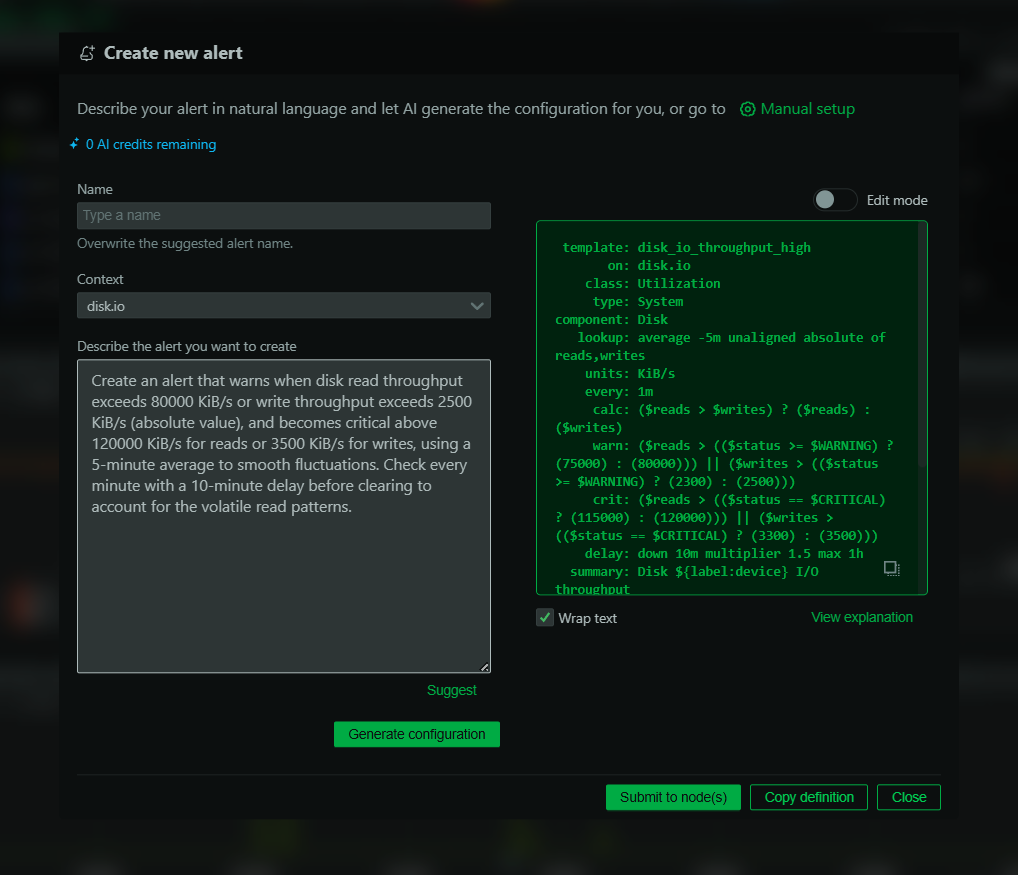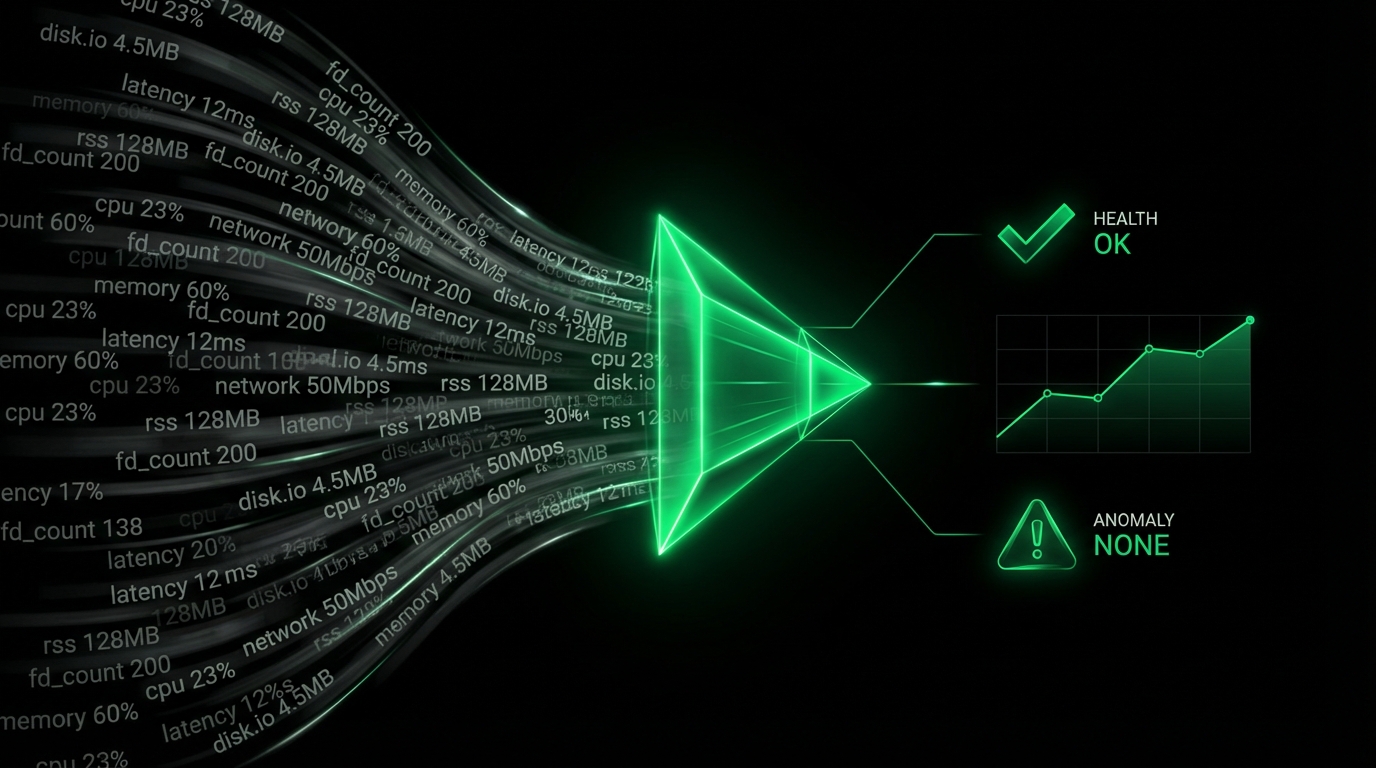CoreDNS Monitoring
What Is CoreDNS?
CoreDNS is a flexible and extensible DNS server that can serve as a cluster DNS inside Kubernetes or provide other DNS services. Built with a focus on flexibility, plugin support, and efficiency, it’s designed to facilitate the addition and combination of functionalities. You can read more about CoreDNS on their official website.
Monitoring CoreDNS With Netdata
Netdata is an ideal tool for monitoring CoreDNS, offering real-time visibility and insightful metrics. With Netdata, you can track DNS queries, responses, and errors to ensure the robustness and performance of your DNS server. Explore our Live Demo to experience Netdata’s capabilities firsthand.
Why Is CoreDNS Monitoring Important?
Monitoring CoreDNS is essential for maintaining DNS reliability and performance within your infrastructure. Unmonitored DNS issues can lead to slow response times, increased latency, or even downtime, affecting your services’ availability. By proactively monitoring, you can quickly identify and resolve issues, ensuring seamless operation and user satisfaction.
What Are The Benefits Of Using CoreDNS Monitoring Tools?
Using a CoreDNS monitoring tool such as Netdata provides numerous benefits:
- Real-Time Alerts: Detect and respond to potential issues before they impact your services.
- In-Depth Analysis: Gain insights into DNS query performance and server load.
- Efficiency: Optimize DNS configurations and resolve issues swiftly.
- Comprehensive Metrics: Leverage detailed metrics to improve system reliability.
Understanding CoreDNS Performance Metrics
Monitoring CoreDNS involves a suite of key metrics that help track the health and performance of your DNS servers:
DNS Request Metrics
- coredns.dns_request_count_total: Number of DNS requests processed per second.
- coredns.dns_request_count_total_per_status: Differentiates between processed and dropped DNS requests.
DNS Response Metrics
- coredns.dns_responses_count_total: Number of DNS responses issued per second.
- coredns.dns_responses_count_total_per_rcode: Breakdown of responses by response code, such as
NOERRORorNXDOMAIN.
Performance and Stability Metrics
- coredns.dns_no_matching_zone_dropped_total: DNS requests dropped due to no matching zone.
- coredns.dns_panic_count_total: Number of server panics due to internal errors.
| Metric Name | Description |
|---|---|
| coredns.dns_request_count_total | Number of DNS Requests processed per second |
| coredns.dns_responses_count_total | Number of DNS Responses issued per second |
| coredns.dns_request_count_total_per_status | Processed vs. Dropped DNS Requests |
| coredns.dns_responses_count_total_per_rcode | DNS Responses per Rcode, indicating response success or failure |
| coredns.dns_no_matching_zone_dropped_total | Requests dropped due to no matching DNS zone |
| coredns.dns_panic_count_total | Server panics due to internal errors |
Advanced CoreDNS Performance Monitoring Techniques
Advanced monitoring techniques with Netdata can include per-server and per-zone metrics breakdown which allows specific issue isolation and targeted troubleshooting. This enhances performance management and fine-tuning capabilities to drastically improve DNS resolution times and reduce operational latency.
Diagnose Root Causes Or Performance Issues Using Key CoreDNS Statistics & Metrics
Netdata’s extensive dashboard aids in diagnosing CoreDNS issues with precision. By evaluating metrics such as request/response counts, error distribution, and zone-specific traffic, you can quickly locate problems and roll out effective remedies. Explore and unleash the potential of Netdata - Sign up for a Free Trial today.
FAQs
What Is CoreDNS Monitoring?
CoreDNS Monitoring involves tracking its performance and ensuring it operates efficiently without bottlenecks or failures. Monitoring tools collect and analyze metrics that are crucial for understanding how CoreDNS is performing.
Why Is CoreDNS Monitoring Important?
Monitoring CoreDNS is crucial for maintaining DNS reliability, ensuring faster resolutions, and avoiding service downtime through early detection of issues.
What Does A CoreDNS Monitor Do?
A CoreDNS monitor collects metrics such as DNS requests/responses, error rates, and system load, offering insights into its operational status.
How Can I Monitor CoreDNS In Real Time?
With Netdata, you can easily monitor CoreDNS in real time. Simply check our Live Demo or sign up for free to start within minutes. Effortlessly set up monitoring to keep your DNS services running smoothly.
That’s the essential guide to CoreDNS monitoring. To view the powerful features in action, explore Netdata live or sign up to enhance your infrastructure health monitoring today.









